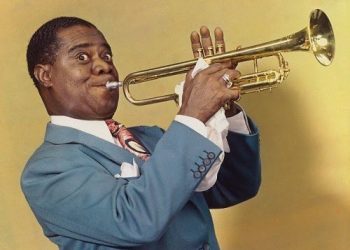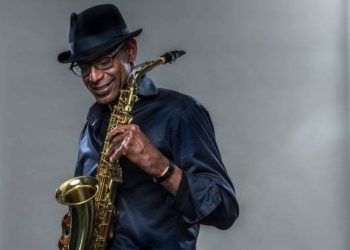Saxophone players, or saxophonists, hold a distinctive place in the musical world, weaving a tapestry of sound that spans a multitude of genres, from the sultry depths of jazz to the pulsating rhythms of rock, the soulful cries of blues, and the intricate harmonies of classical compositions. The saxophone, with its rich tonal palette and expressive capabilities, offers these musicians a unique voice, capable of conveying a wide range of emotions and stories through its resonant reeds.
The art of saxophone playing combines technical mastery with deep emotional expression, demanding both rigorous discipline and intuitive feeling from the player. Mastery over breath control, fingering techniques, and the ability to shape phrases with subtle nuances of tone and dynamics are essential skills honed over years of dedicated practice. Yet, it’s the saxophonist’s personal touch—their ability to imbue each note with feeling, whether it’s the raw energy of a bebop solo, the haunting beauty of a ballad, or the funky grooves of a contemporary hit—that truly defines their artistry.
Saxophonists often explore the instrument’s vast expressive range, from the soaring highs of the soprano sax to the deep, rich tones of the baritone, crafting soundscapes that can evoke an array of settings and emotions. Their performances can captivate audiences, drawing listeners into a shared experience of musical exploration and emotional journey. Through their craft, saxophone players continue to push the boundaries of music, contributing to its ongoing evolution and enriching the global cultural landscape.
1. Gerry Mulligan
Gerry Mulligan, born on April 6, 1927, in Queens, New York, was an American jazz saxophonist, clarinetist, composer, and arranger, renowned for his work as a baritone saxophonist. Mulligan’s contributions to jazz during the 1940s and beyond played a significant role in the development of the cool jazz movement, characterized by its relaxed tempos and lighter tones, in contrast to the more frenetic style of bebop.
Mulligan’s career was marked by his innovative approach to jazz composition and arrangement, notably his work with the Miles Davis Nonet on the seminal album “Birth of the Cool,” which laid the groundwork for the cool jazz style. His ability to blend intricate counterpoint with melodic simplicity helped define the sound of this era.
As a band leader, Mulligan was known for his piano-less quartets, first established with trumpeter Chet Baker in the early 1950s. This format allowed for greater harmonic freedom and interplay among the musicians, showcasing Mulligan’s skill as both a performer and arranger. His compositions during this period, such as “Walkin’ Shoes” and “Jeru,” became jazz standards.
Throughout his career, Mulligan collaborated with many jazz luminaries, including Paul Desmond, Dave Brubeck, and Thelonious Monk, further cementing his legacy as a pivotal figure in jazz history. His deep, rich tone on the baritone saxophone was both distinctive and expressive, capable of conveying a broad emotional range from melancholy to exuberance.
Gerry Mulligan’s contributions to jazz extended beyond his musicianship; he was a mentor and influence to many younger musicians. His innovative approaches to jazz composition, arrangement, and performance left a lasting imprint on the genre. Mulligan passed away on January 20, 1996, but his music continues to inspire and influence jazz musicians and enthusiasts around the world.
2. Wayne Shorter
Wayne Shorter, born on August 25, 1933, in Newark, New Jersey, is an acclaimed American jazz saxophonist and composer, widely regarded as one of the most significant and influential jazz musicians and composers of the modern era. Shorter’s career spans over six decades, during which he has been a pivotal figure in the evolution of jazz through his work with Art Blakey’s Jazz Messengers, the Miles Davis Second Great Quintet, Weather Report, and his own prolific solo career.
Shorter’s compositions, which include pieces like “Speak No Evil,” “Footprints,” “Nefertiti,” and “E.S.P.,” are celebrated for their complex harmonies and sophisticated structures, blending elements of hard bop, modal jazz, fusion, and free jazz. His work is characterized by a unique lyrical approach to the saxophone, both on the tenor and soprano, and a deeply philosophical and spiritual approach to composition and improvisation.
As a co-founder of the pioneering jazz fusion band Weather Report, along with keyboardist Joe Zawinul, Shorter helped to redefine jazz in the 1970s and 1980s, pushing the boundaries of the genre with albums like “Heavy Weather” and “Black Market.” His solo albums, notably “Speak No Evil” and “Juju,” are considered jazz classics and have had a profound influence on the direction of jazz and the development of young musicians.
Over the years, Shorter has received numerous accolades, including multiple Grammy Awards and the NEA Jazz Masters Award in 1998, one of the highest honors in jazz. His enduring contributions to the art form have solidified his legacy as a masterful innovator and a visionary in the world of jazz.
3. Paul Desmond
Paul Desmond, born Paul Emil Breitenfeld on November 25, 1924, in San Francisco, California, was an American jazz alto saxophonist and composer, best known for his work with the Dave Brubeck Quartet and for composing the group’s greatest hit, “Take Five.” With a style that stood out for its smooth, melodic lines and a tone described as dry martini, Desmond’s approach to jazz was rooted in the cool jazz movement, characterized by its relaxed tempos and lighter tones.
Desmond’s collaboration with Dave Brubeck yielded some of the most innovative and popular jazz recordings of the 1950s and 1960s, including the groundbreaking album “Time Out,” which was the first jazz album to sell over a million copies. His playing on “Take Five,” which is known for its distinctive 5/4 time signature, remains one of the most recognizable saxophone solos in jazz history.
Beyond his achievements with the Brubeck Quartet, Desmond led a successful career as a leader and collaborator with other jazz greats, including Gerry Mulligan, Jim Hall, and Chet Baker, further showcasing his lyrical playing style and compositional skills. His music was marked by a keen sense of melody and a preference for improvisational clarity, qualities that made his work accessible to a wide audience beyond the traditional jazz listenership.
Desmond was known for his witty and introspective personality, qualities that often reflected in his music and interviews. Despite battling lung cancer, he continued to perform until shortly before his death on May 30, 1977. Paul Desmond’s legacy as a pivotal figure in the development of cool jazz, along with his unique sound and contributions to jazz as a composer and performer, endures in the world of jazz and beyond. His musical elegance, coupled with the intellectual depth of his improvisations, continues to influence saxophonists and jazz musicians, making him an enduring figure in the history of the genre.
4. Dexter Gordon
Dexter Gordon (February 27, 1923 – April 25, 1990) was an American jazz tenor saxophonist and actor, widely regarded as one of the first players of the instrument in the bebop idiom. A major figure in the history of jazz, Gordon’s career spanned over 40 years, during which he played with some of the biggest names in jazz, including Louis Armstrong, Lionel Hampton, and Billy Eckstine. His tall stature, distinctive sound, and innovative playing style made him a pioneering force in the development of modern jazz saxophone playing.
Born in Los Angeles, California, Gordon was notable for his large, spacious sound, influenced by Lester Young, and his tendency to play behind the beat, creating a laid-back, relaxed style that became his trademark. His recordings from the 1940s through the 1960s, particularly those for Blue Note Records, including albums like “Go,” “Our Man in Paris,” and “A Swingin’ Affair,” are considered jazz classics and have contributed significantly to the bebop and hard bop genres.
Gordon spent several years living in Europe during the 1960s and 1970s, mainly in Copenhagen, Denmark, where he became a major figure in the European jazz scene. His time in Europe helped rejuvenate his career, and he made numerous recordings with fellow expatriates and European musicians.
In addition to his musical career, Dexter Gordon also had a notable acting career, with his most acclaimed role being that of Dale Turner in the 1986 film “Round Midnight,” directed by Bertrand Tavernier. Gordon’s performance in the film earned him an Academy Award nomination for Best Actor, highlighting his talent and charisma on screen.
Gordon’s legacy is that of a jazz innovator who influenced generations of saxophonists, including John Coltrane, Sonny Rollins, and Stan Getz. He was posthumously inducted into the Jazz Hall of Fame and remains celebrated for his contributions to the art form.
5. Lester Young
Lester Young (August 27, 1909 – March 15, 1959), nicknamed “Pres” or “Prez” by Billie Holiday as a short form of “President,” was an American jazz tenor saxophonist and occasional clarinetist. Young was one of the most influential players on his instrument, playing a pivotal role in the development of the cool jazz, swing, and bebop genres. His smooth, laid-back style and innovative approach to phrasing and improvisation contrasted sharply with the more aggressive tenor saxophone styles of his contemporaries and had a profound influence on future generations of jazz musicians.
Young came to prominence while playing with the Count Basie Orchestra in the late 1930s and early 1940s, where his unique approach to the tenor saxophone stood out, characterized by a light, fluid sound that eschewed the vigorous vibrato and heavier tone common among saxophonists of the era. His solos were marked by relaxed, horizontal phrasing, a tendency to play behind the beat, and a sophisticated use of harmony that was ahead of its time.
Throughout his career, Young recorded a series of classic tracks and albums, both as a leader and with other jazz legends, including a fruitful and emotionally deep musical partnership with singer Billie Holiday. Tracks like “Lester Leaps In” and his recordings with the Oscar Peterson Trio are highlights of his extensive discography.
Unfortunately, Young’s career was marred by personal struggles, including battles with alcoholism and depression, particularly after a traumatic stint in the U.S. Army during World War II, which affected his physical and mental health. Despite these challenges, Young’s contributions to jazz were immense, influencing saxophonists like Stan Getz, Zoot Sims, and countless others.
Lester Young passed away in 1959, but his legacy lives on through his recordings and the lasting influence he has had on the world of jazz. He was posthumously inducted into the DownBeat Jazz Hall of Fame and continues to be celebrated as one of the giants of jazz music.
6. Michael Brecker
Michael Brecker, born on March 29, 1949, in Philadelphia, Pennsylvania, was an American jazz saxophonist and composer who left an indelible mark on jazz and popular music. Renowned for his innovative approach to the tenor saxophone, Brecker’s virtuosic technique, and expressive playing style helped redefine the instrument’s role in both jazz and fusion genres. His ability to blend elements of jazz, rock, and R&B made him one of the most influential and sought-after saxophonists of his generation.
Brecker’s career spanned over three decades, during which he contributed to hundreds of recordings across a wide range of musical styles. He was a co-founder of the pioneering jazz fusion group The Brecker Brothers, alongside his trumpet-playing brother Randy Brecker. The group was known for its complex compositions, funky grooves, and sophisticated harmonies, blending jazz improvisation with the energy of rock and funk.
As a session musician, Michael Brecker’s powerful and versatile saxophone playing graced albums by a multitude of artists, including James Taylor, Paul Simon, Joni Mitchell, and Steely Dan, showcasing his remarkable ability to adapt his sound to complement any musical context. His solo career was equally distinguished, with albums like “Don’t Try This at Home,” “Tales from the Hudson,” and “Pilgrimage” earning critical acclaim and numerous awards, including multiple Grammy Awards.
Brecker was not just a performer but an innovator, pushing the boundaries of electronic wind instruments and incorporating them into his music. Despite his battle with myelodysplastic syndrome, a bone marrow disorder, he continued to perform and record until his death on January 13, 2007. Michael Brecker’s legacy is that of a musician who combined technical mastery with profound emotional depth, influencing countless saxophonists and jazz musicians around the world. His contributions to music remain a testament to his extraordinary talent and enduring influence.
7. Sidney Bechet
Sidney Bechet, born on May 14, 1897, in New Orleans, Louisiana, was a pioneering jazz figure, virtuoso clarinetist, and one of the first important soloists in jazz, alongside Louis Armstrong. Bechet’s influence in the development of jazz was profound, thanks to his innovative approach to improvisation and his mastery of the soprano saxophone, an instrument he made his own despite its rarity in jazz at the time. His playing was characterized by its intense vibrato, expressive dynamics, and a lyrical quality that brought a singing voice to his instruments.
Bechet grew up in a musical family and was exposed to a rich tapestry of musical influences from a young age. He quickly distinguished himself as a prodigious talent on the clarinet. By his teenage years, he was performing professionally, and his career took him from New Orleans to Chicago, New York, and eventually to Europe, where he found a significant audience, particularly in France, where he spent much of his later life.
Bechet’s contributions to the jazz canon include compositions that have become standards, such as “Petite Fleur” and “Si Tu Vois Ma Mère.” His recordings from the 1920s and 1930s are seminal works that capture the early excitement and innovation of jazz. Bechet was not only a masterful performer but also a bridge between the traditional New Orleans style and the evolving sound of swing.
Throughout his career, Sidney Bechet battled racial discrimination and the challenges of life as a jazz musician, yet his music remained joyous and profoundly influential. He was a mentor to younger musicians and a fierce advocate for jazz as an art form. Bechet’s legacy is celebrated for his contributions to the development of jazz as a soloist’s art form, his pioneering use of the soprano saxophone, and his role in spreading jazz internationally. Sidney Bechet passed away on May 14, 1959, in Garches, France, but his music and impact on jazz continue to be celebrated worldwide.
8. Sonny Stitt
Sonny Stitt (born Edward Hammond Boatner Jr., February 2, 1924 – July 22, 1982) was an American jazz saxophonist who worked prolifically in the bebop and hard bop genres. Known for his virtuosic skill on both the alto and tenor saxophones, Stitt was renowned for his remarkably fast technique and the warm, vibrant tone he coaxed from his instruments. His style was heavily influenced by Charlie Parker, leading to frequent comparisons between the two; however, Stitt established a distinct voice that was influential in its own right.
Over the course of his career, Stitt recorded extensively as both a leader and sideman, contributing to a vast array of classic jazz recordings. He was known for his ability to play in a variety of jazz styles, from swing to soul jazz, and for his adaptability in different ensemble settings. Despite the shadow of Parker’s legacy, Stitt’s work on the alto saxophone helped solidify his reputation as a master of the instrument, although he also demonstrated exceptional skill on the tenor saxophone.
Notable albums in Stitt’s discography include “Sonny Stitt Blows the Blues” and “Stitt Plays Bird,” the latter being a tribute to Charlie Parker that showcased Stitt’s deep understanding of bebop language. Stitt’s collaborations with fellow saxophonists, such as Gene Ammons and Dexter Gordon, are highly regarded for their competitive yet complementary interplay.
Throughout his life, Sonny Stitt was dedicated to the pursuit of jazz, often performing and recording up until his death in 1982. His legacy is that of a consummate musician who, despite the inevitable comparisons to contemporaries, carved out a niche for himself with his exceptional talent and dedication to his craft. Stitt’s influence continues to be felt among saxophonists and jazz aficionados, cementing his place as one of the stalwarts of jazz saxophone.
9. Charlie Parker
Charlie Parker, born on August 29, 1920, in Kansas City, Kansas, was an American jazz alto saxophonist, composer, and innovator who is universally celebrated as one of the most influential musicians in the history of jazz. Parker, also known as “Bird,” was a leading figure in the development of bebop, a complex and fast-paced style of jazz that emerged in the 1940s. His virtuosic technique, profound harmonic insights, and revolutionary approach to improvisation changed the landscape of jazz music, setting new standards for performance and creativity.
Parker’s music was characterized by rapid tempos, intricate chord changes, and advanced improvisational skills. His ability to create cohesive and compelling solos over the challenging progressions of bebop compositions made him a model for future generations of jazz musicians. Some of his most celebrated compositions, such as “Ornithology,” “Ko-Ko,” and “Yardbird Suite,” have become jazz standards and are essential studies for jazz performers.
Despite facing personal challenges, including struggles with addiction, Parker’s impact on jazz was profound. He collaborated with other jazz greats like Dizzy Gillespie, Max Roach, and Miles Davis, contributing to some of the most innovative recordings of the era. Parker’s music transcended the boundaries of jazz, influencing classical composers and musicians in other genres.
Charlie Parker’s legacy is not only in his breathtaking improvisations and compositions but also in his approach to music. He pushed the boundaries of jazz, encouraging musicians to explore their creativity and develop their voices. Parker’s influence can be heard in the generations of jazz musicians who followed, all of whom owe a debt to his genius. Despite his untimely death on March 12, 1955, at the age of 34, Parker’s contributions to music continue to inspire and captivate listeners around the world, cementing his status as a towering figure in the annals of jazz.
10. John Coltrane
John Coltrane, born on September 23, 1926, in Hamlet, North Carolina, and passing away on July 17, 1967, in Huntington, New York, was an American jazz saxophonist and composer, whose work revolutionized jazz music and influenced generations of musicians. Known for his virtuosic technique, complex improvisations, and deep spirituality, Coltrane was a pivotal figure in the development of bebop and the forefront of the free jazz movement.
Coltrane’s career was marked by constant evolution and exploration in music. He first gained prominence as a member of the Miles Davis Quintet in the mid-1950s, contributing to the seminal album “Kind of Blue,” widely considered one of the greatest jazz albums of all time. Coltrane also played with Thelonious Monk, with their collaboration further enhancing his skill and creativity.
In 1960, Coltrane formed his classic quartet with pianist McCoy Tyner, bassist Jimmy Garrison, and drummer Elvin Jones, producing groundbreaking albums like “My Favorite Things,” “A Love Supreme,” and “Giant Steps.” “A Love Supreme,” recorded in 1964, is celebrated for its expressive power and spiritual message, showcasing Coltrane’s innovative use of modal harmony and his quest for spiritual and musical enlightenment.
Coltrane’s later work ventured into avant-garde jazz, pushing the boundaries of the genre with albums like “Ascension” and “Interstellar Space,” characterized by intense improvisations and a departure from traditional jazz structures. His exploration of overtones and alternative scales on the saxophone, along with his pioneering use of modes, has left a lasting legacy in jazz music.
Despite his relatively brief career, John Coltrane’s impact on jazz is immense, earning him numerous posthumous awards, including a Pulitzer Prize Special Citation. He was also canonized by the African Orthodox Church, reflecting the spiritual influence of his music. Coltrane’s pursuit of innovation and his profound musical and spiritual legacy continue to inspire and influence musicians and listeners around the world.
11. Sonny Rollins
Sonny Rollins, born Theodore Walter Rollins on September 7, 1930, in New York City, is a towering figure in the world of jazz, renowned for his powerful tenor saxophone playing and innovative contributions to the genre. Rollins’ career, which spans over seven decades, is marked by his relentless pursuit of musical exploration, reinvention, and a deep commitment to the art form of jazz. His work encompasses a wide range of styles, from hard bop and avant-garde to calypso, showcasing his versatility and creativity as a musician.
From the outset of his career in the early 1950s, Rollins established himself as a leading voice in jazz, collaborating with other legends such as Miles Davis, Thelonious Monk, and Max Roach. His ability to construct solos that are both intricate and accessible has earned him critical acclaim and a devoted following. Albums like “Saxophone Colossus,” “Way Out West,” and “The Bridge” are seminal works that have left an indelible mark on the jazz canon, featuring iconic tracks that highlight Rollins’ innovative approach to melody, rhythm, and improvisation.
Rollins is also known for his spontaneous and dynamic live performances, often embarking on extended improvisational journeys that demonstrate his exceptional skill, stamina, and emotional depth. His practice of playing unaccompanied saxophone concerts further solidified his reputation as a master of the instrument, capable of captivating audiences with his solo explorations.
Throughout his career, Sonny Rollins has been honored with numerous awards and accolades, including the Grammy Lifetime Achievement Award, the National Medal of Arts, and induction into the Academy of Achievement. Despite these accolades, Rollins has always remained focused on the pursuit of musical growth and self-expression, continually pushing the boundaries of jazz.
Rollins’ legacy is not just in his recordings and performances, but also in his influence on generations of musicians who have drawn inspiration from his work. As an innovator and a pioneer, Sonny Rollins embodies the spirit of jazz: its resilience, its capacity for transformation, and its profound expression of the human experience. His contributions to music continue to resonate, making him one of the most revered and respected artists in the history of jazz.
12. Coleman Hawkins
Coleman Hawkins (November 21, 1904 – May 19, 1969) was an American jazz tenor saxophonist, widely regarded as one of the most important and influential saxophonists in the history of jazz. Hawkins is often credited with establishing the tenor saxophone as a key instrument in jazz, moving it from the background of bands to the forefront of solo performance. His robust, swinging style laid the groundwork for future developments in jazz, including bebop and beyond.
Born in Saint Joseph, Missouri, Hawkins started playing cello and piano before switching to saxophone. He joined Fletcher Henderson’s Orchestra in the early 1920s, where he became a featured soloist and made some of the first important jazz recordings on the tenor saxophone. His tenure with Henderson established him as a leading figure in the jazz world.
Hawkins’s 1939 recording of “Body and Soul” is one of his most celebrated performances and a landmark in jazz history. His improvisation on the tune, with its intricate harmonic structure and flowing, melodic lines, was unprecedented at the time and has since become a template for jazz improvisation.
Throughout his career, Hawkins worked with many other jazz greats, including Django Reinhardt, Thelonious Monk, and Max Roach. He was known for his ability to adapt to the changing styles of jazz, from swing to bebop, showcasing his versatility and creativity.
Despite the emergence of newer saxophone stars in the bebop era, Hawkins remained a respected and influential figure until his death. His legacy endures through his recordings and the generations of saxophonists he inspired, including Sonny Rollins, John Coltrane, and Stan Getz. Coleman Hawkins’s contributions to jazz have made him an enduring figure in the music’s history, celebrated for his pioneering role in the development of the tenor saxophone as a solo instrument.
13. Stan Getz
Stan Getz, born Stanley Gayetski on February 2, 1927, in Philadelphia, Pennsylvania, was an American jazz saxophonist whose smooth, lyrical playing style made him one of the foremost figures in the cool jazz movement of the 1950s. Getz’s tenor saxophone tone, marked by its warm, rich, and melodic quality, earned him widespread acclaim and the nickname “The Sound.” His ability to blend technical mastery with profound emotional expression allowed him to excel across various jazz styles, from bebop and cool jazz to bossa nova, with which he became synonymous in the early 1960s.
Getz’s career was a journey through the evolution of modern jazz. He first gained prominence as a member of Woody Herman’s Second Herd in the late 1940s, where his performance on hits like “Early Autumn” brought him national recognition. As a bandleader and collaborator, Getz was known for his musical sensitivity and his ability to draw the best from his fellow musicians, leading to many memorable recordings.
His exploration of bossa nova, a Brazilian music style that combines samba rhythms with jazz harmonies, led to the landmark album “Getz/Gilberto” with Brazilian guitarist João Gilberto. The album, featuring the global hit “The Girl from Ipanema,” sung by Astrud Gilberto, played a pivotal role in popularizing bossa nova worldwide and remains one of the best-selling jazz albums of all time.
Throughout his career, Getz faced personal challenges, including struggles with substance abuse, yet his music continued to evolve and inspire. His later work ventured into fusion and contemporary jazz, showcasing his willingness to experiment and adapt to the changing landscape of jazz.
Stan Getz’s contributions to jazz were recognized with multiple Grammy Awards and a legacy that has influenced countless musicians. His ability to convey deep emotion through his saxophone has left a lasting imprint on the genre, cementing his status as one of jazz’s great tenor saxophonists. Getz passed away on June 6, 1991, but his music continues to enchant new generations of listeners and musicians alike, attesting to his enduring influence and the timeless quality of his artistry.
14. Ornette Coleman
Ornette Coleman (March 9, 1930 – June 11, 2015) was an American jazz saxophonist, violinist, trumpeter, and composer, widely regarded as one of the most innovative and influential musicians in the history of jazz. He was a pioneering force behind the development of the free jazz movement in the late 1950s and early 1960s, a genre that broke away from traditional jazz constraints to embrace improvisation, atonality, and unconventional structures.
Born in Fort Worth, Texas, Coleman began his career playing in rhythm and blues bands before shifting his focus to jazz. He moved to Los Angeles in the early 1950s, where he encountered resistance from the jazz establishment due to his unconventional approach to music. However, Coleman persisted with his vision, eventually moving to New York City, where he found a more receptive audience and like-minded musicians.
Coleman’s 1959 album “The Shape of Jazz to Come” is considered a seminal work in free jazz, introducing his concept of “harmolodics,” a musical philosophy that emphasizes melody (harmony, motion, and melody) over traditional chord progressions and forms. This approach allowed musicians greater freedom to explore and express themselves, leading to a more collective and egalitarian form of improvisation.
Throughout his career, Coleman continued to innovate, experimenting with different ensembles, including the double quartet on the album “Free Jazz: A Collective Improvisation,” which further solidified his place as a revolutionary figure in jazz. His later work explored electronic music, funk, and even classical music, showcasing his wide-ranging talents and curiosity.
Ornette Coleman’s contributions to jazz were recognized with numerous awards, including a Pulitzer Prize for Music, a Grammy Lifetime Achievement Award, and the MacArthur Fellowship. His legacy is that of a visionary who reshaped the landscape of jazz, opening new possibilities for musical expression and influencing countless musicians across various genres.
15. Cannonball Adderley
Cannonball Adderley, born Julian Edwin Adderley on September 15, 1928, in Tampa, Florida, was an American jazz alto saxophonist celebrated for his work in the hard bop and soul jazz genres. His robust, soulful playing and infectious enthusiasm made him one of the most popular and accessible jazz musicians of his era. Adderley’s music was characterized by its bluesy tone, lyrical solos, and the ability to convey deep emotion and joy through his instrument.
Adderley rose to prominence in the 1950s, initially making a mark with his 1955 debut album “Presenting Cannonball Adderley” and then further establishing his reputation by joining the Miles Davis Sextet in 1957. During his tenure with Davis, he contributed to the seminal album “Kind of Blue,” the best-selling jazz album of all time, showcasing his distinctive alto saxophone sound.
In 1959, Adderley formed the Cannonball Adderley Quintet with his brother Nat Adderley on cornet, achieving significant success and influencing the direction of jazz with albums like “Them Dirty Blues” and “Mercy, Mercy, Mercy! Live at ‘The Club’.” The latter featured the soul jazz classic “Mercy, Mercy, Mercy,” composed by Joe Zawinul, which became a crossover hit.
Cannonball Adderley’s approach to jazz was inclusive and educational; he often introduced his compositions with eloquent and insightful remarks, helping to demystify jazz for wider audiences. His band served as a launching pad for several future jazz luminaries, including keyboardists Joe Zawinul and Herbie Hancock.
Throughout his career, Adderley remained a prolific recording artist and an enthusiastic advocate for jazz as a force for cultural and social uplift. His work extended beyond performance and recording; he was also involved in music education, imparting his knowledge and passion for jazz to the next generation.
Cannonball Adderley passed away on August 8, 1975, but his legacy lives on through his extensive discography and the continued influence of his music on jazz and beyond. His joyous approach to jazz and his commitment to artistic and personal integrity continue to inspire musicians and listeners alike.









